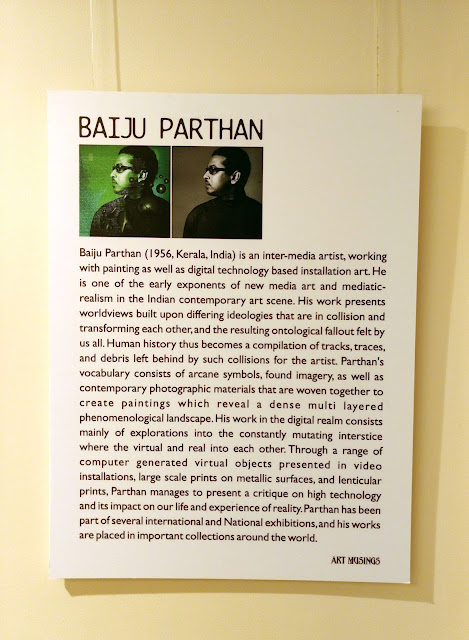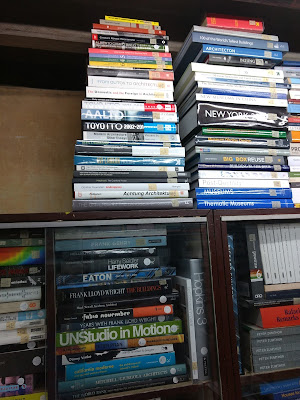The Split Universe
Anuj Daga floats through Baiju Parthan’s world where the natural, the geometrical and the digital are juxtaposed together.
It is difficult to decipher if Necessary Illusions by Baiju Parthan from the 14th of September to the 5th of November at Art Musings, Mumbai, emphasizes or dissolves the split between art and science – a notion that has been carried from the period of the Enlightenment. Historians of science have debated about the way in which artistic versus scientific approaches (which actually carried different semantic charges then) have come to influence the cultural understanding of objects around us. Eric Schatzberg, a scholar at the Department of the History of Science at the University of Wisconsin, argues (1) that broader meanings of art and its centrality to generating knowledge about objects by operating upon them were displaced into the ‘technological’ narrative of science (2) with the onset of industrialisation. Eventually, such a categorization created a divide between the mind and the hand, thinking and making. Parthan’s acrylics on canvas and lenticular prints compel us to ponder upon this illusory divide between the arts and the sciences by merging different realities.
Today, these multiple realities about a singular object are easily recorded, preserved and accumulated as ‘Big Data’ that contain complex information about objects beyond what the human mind or even computers can process at once. By merely juxtaposing several structures of knowledge – chemical, structural, geospatial, geometrical, astronomical and digital – Parthan evokes the different frequencies and densities in which the world may have been crystallized into varied physical forms. For example, in the painting Meta-Flora, a flower is presented in its range of readings – the softness of petals, their ocular perception, the wireframe construct of their curve, the molecular structure that lends them colour and smell, their symbolic appropriations, all become visible on a single canvas. In a similar manner, in yet another painting Engineered Fruit (Disrupterr), the motif of a pear is blown up but caged within its geometrical formation, scaled against the cartography of the sky, immediately drawing astronomical connections between the two: the shape of the space we inhabit and the shape of the things we consume. These hand-painted imageries immediately bring us closer to the varied experiments of the naturalists, botanists, astronomers, cartographers and enthusiasts dedicated to deciphering the natural world. The pursuit of the design of nature, which was ‘purist’ in the works of earlier artists, has become multilayered in the work of the artist today.
Parthan further makes the art-science discourse more contemporary through his lenticular experiments in the second section of the show. Here, we encounter semi-animated images of the pear dissolving into words that become elastic, stretching their own meanings. As one shifts the position of viewing, the raw fruit ripens and diffracts into its own existential politics. The words seen through the moving gaze refer to the embeddedness of the consumable object within larger networks of trade, economics, production and biomorphics, eventually making us wonder if it even belongs to the natural world. Hung from the walls as free-falling objects, the pear parts that appear and disappear to the moving body, play between the actual and the imaginary – making the ghost of the real a necessary illusion. In another instance, one is pushed to believe that the data-drowned objects of today are caught up in their own evolutionary time – an anomalous raw-ripe maturity. Classification tables now morph objects and their multiple identities, bringing us to a space of ambiguity where ‘things’ have as much agency as humans may have once had. The lenticular layers of these panels present the dangers and depths of data pools within which our lives are suspended.
In his last set, Parthan reimagines living in a phenomenally restructured world, where all objects are packets of information. Parthan’s constructions emphasize our uncanny navigation through the everyday as insecure datascapes. Hovering objects like aeroplanes, gas balloons or even sharks over ordinary urban settings evoke an atmosphere of suspicion due to over-indulgence in information practices. However, in some instances, these motifs seem too literal vis-a-vis their historical referents. The equation of floating sharks to terrorists over the Gateway of India seems too direct a reference to the 2008 attacks in Mumbai. On the other hand, taxis levitating through balloons at the Victoria Train Terminus confuse: does the work depict a flight into history or the future? While it recalls Rene Magritte’s Golconda that depicts scenes of ‘raining men’, the work does not have a strong surreal impact. Nevertheless, the technique engages the viewer in a play of perception – where each eye possibly beholds a relevant scientific reality. Parthan’s artistic renderings thus enable every viewer to participate in his own process of decoding the world and uncovering a certain truth.
End-notes
1) See Schatzberg Eric’s “From Art to Applied Science” in Isis, Vol. 103, No. 3, September 2012, pgs. 555-563.
2) Earlier, it was held that art is directed toward action, science toward contemplation.

1) Baiju Parthan. Meta-Flora. Acrylic on canvas. 48” x 96”. 2016. Image courtesy the artist and Art Musings.
Other Images
















































